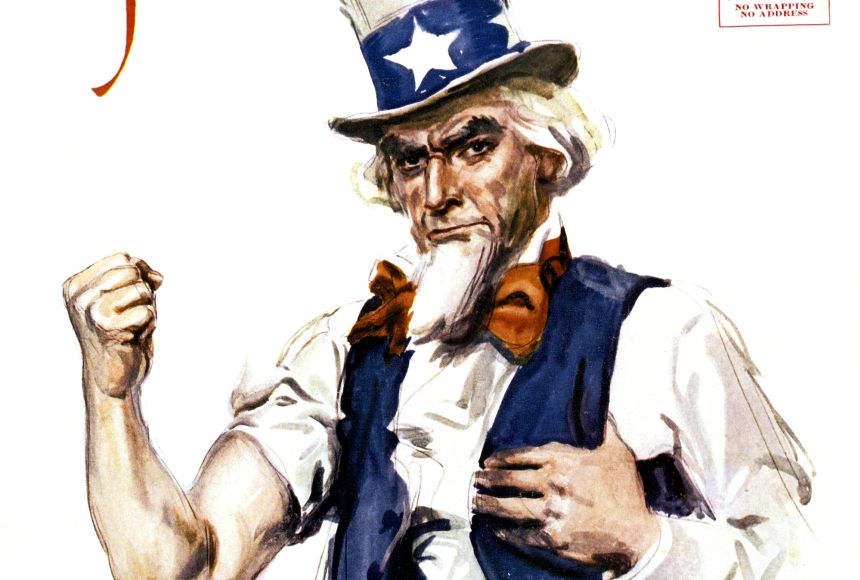ENCYCLOPEDIC ENTRY
ENCYCLOPEDIC ENTRY
Uncle Sam
Uncle Sam
Uncle Sam is a cartoon symbol for the United States, the U.S. government, or the American people.
Grades
5 - 8
Subjects
Social Studies, U.S. History, Storytelling
Image
Uncle Sam Magazine Cover
Uncle Sam has been a long standing symbol of American patriotism. His image has been used by the United States government in a number of different ways, from stamps and military recruiting posters to magazines and newspaper cartoons.
Photograph by Nawrock/Classic Stock

Media Credits
The audio, illustrations, photos, and videos are credited beneath the media asset, except for promotional images, which generally link to another page that contains the media credit. The Rights Holder for media is the person or group credited.
Director
Author
Production Manager
Program Specialists
Specialist, Content Production
Producer
other
Last Updated
October 19, 2023
For information on user permissions, please read our Terms of Service. If you have questions about how to cite anything on our website in your project or classroom presentation, please contact your teacher. They will best know the preferred format. When you reach out to them, you will need the page title, URL, and the date you accessed the resource.
Media
If a media asset is downloadable, a download button appears in the corner of the media viewer. If no button appears, you cannot download or save the media.
Text
Text on this page is printable and can be used according to our Terms of Service.
Interactives
Any interactives on this page can only be played while you are visiting our website. You cannot download interactives.